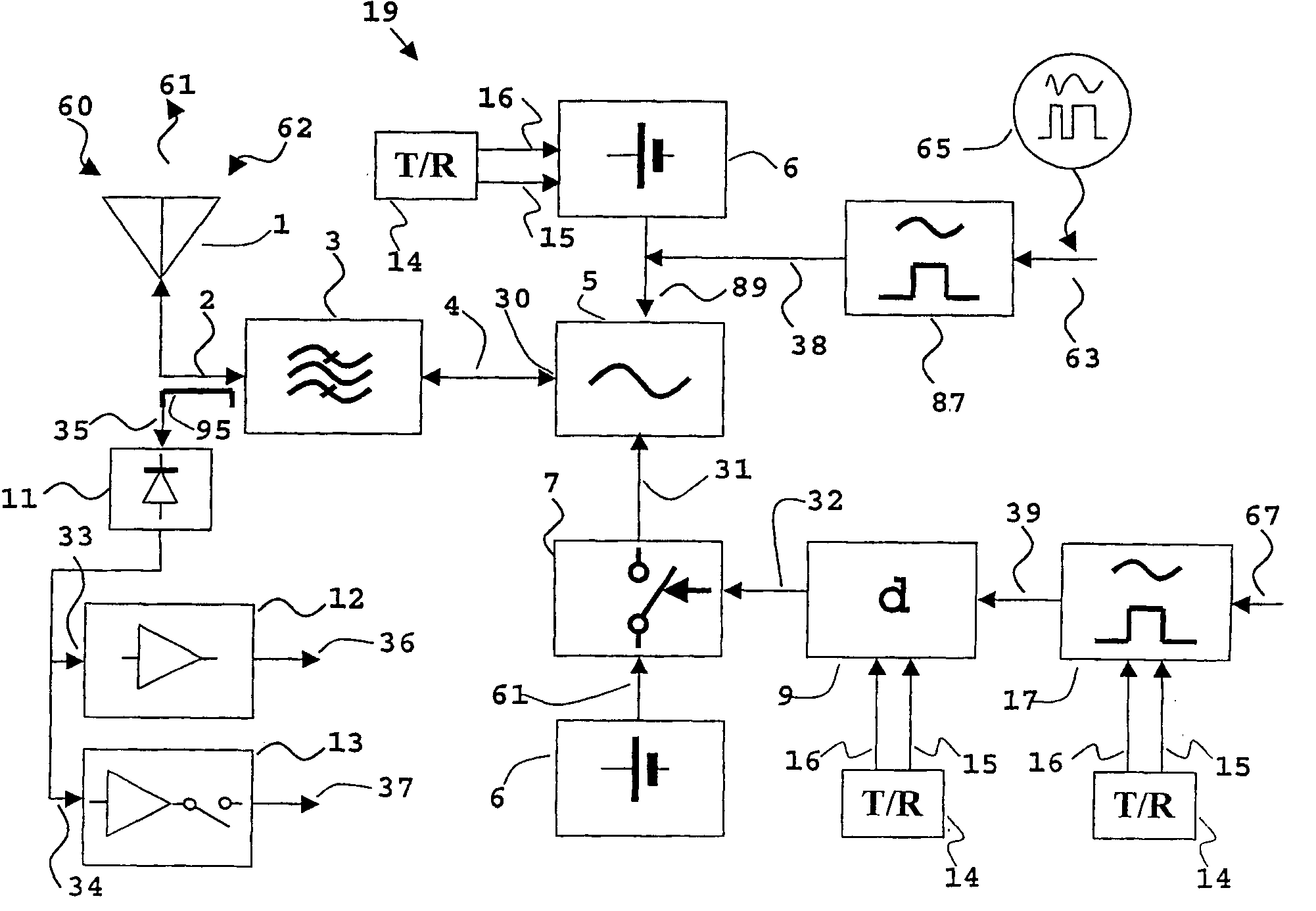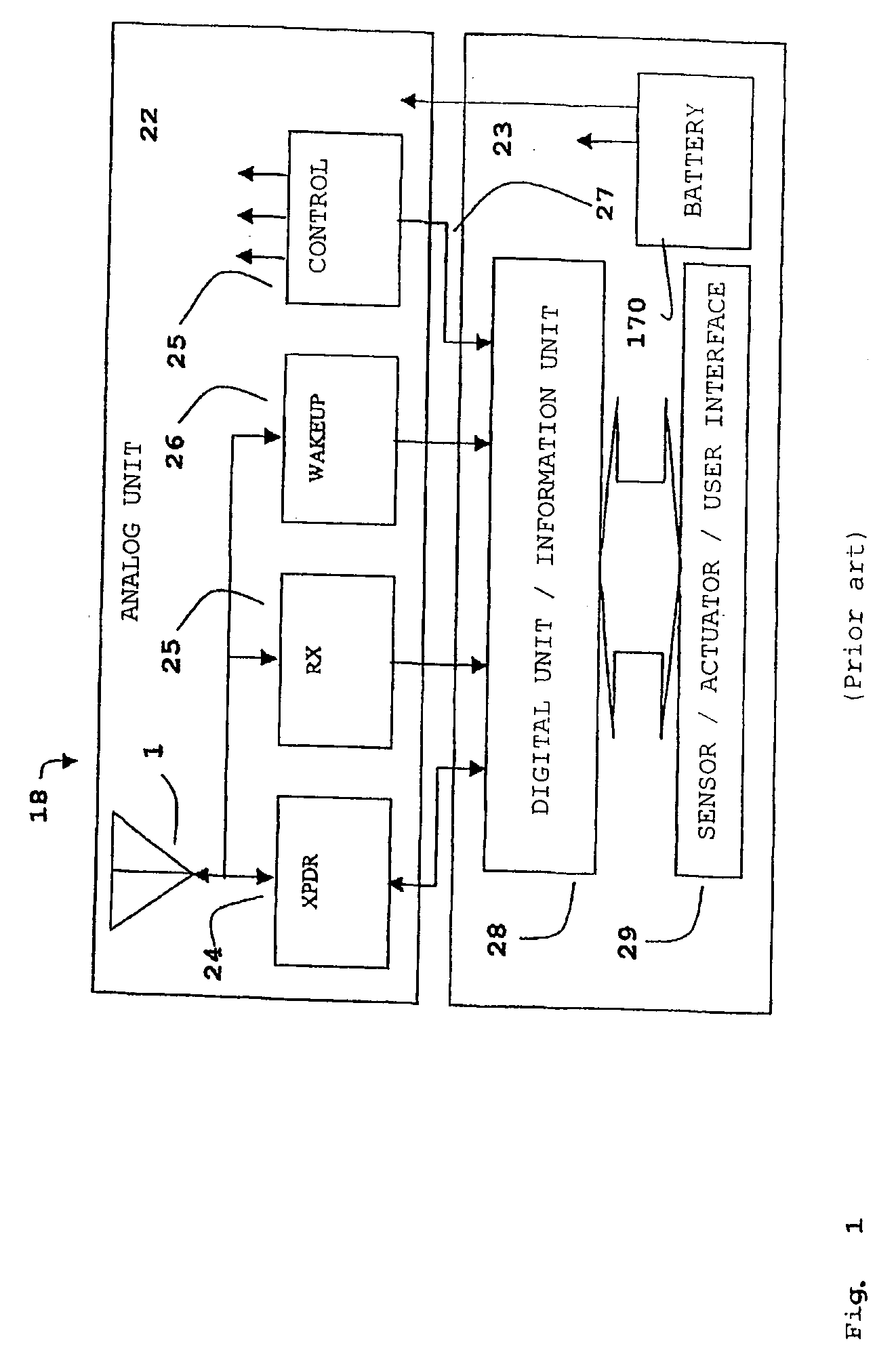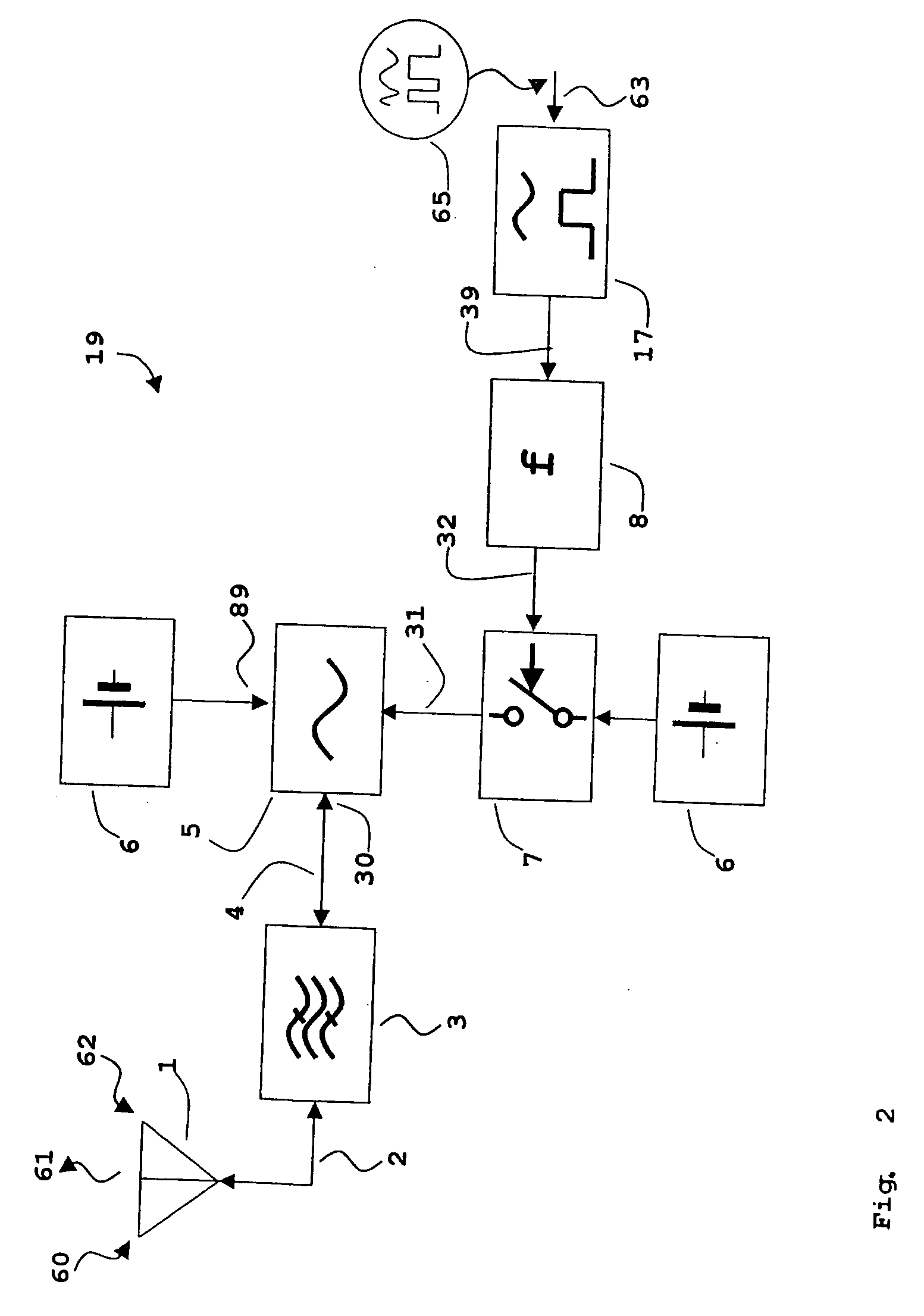Analogue regenerative transponders including regenerative transponder systems
a regenerative transponder and analog technology, applied in the field of analog regenerative transponder including regenerative transponder system, can solve the problems of reducing information bandwidth, cost and reducing complexity, and achieving results that cannot be achieved using conventional technology, and achieves reduced total system cost, wide bandwidth communication, and improved overall coverage
- Summary
- Abstract
- Description
- Claims
- Application Information
AI Technical Summary
Benefits of technology
Problems solved by technology
Method used
Image
Examples
Embodiment Construction
[0050] In FIG. 1 is shown a typical transponder device 18 consisting of an analogue 22 and a digital 23 unit. The analogue part has an antenna 1 and a radio frequency transponder 24. The transponder 24 may be a modulated transmitter or a transponder capable of retransmitting the incoming carrier with a modulated response from the transponder 18. It is often designed to include a down link receiver 25 and a wake up receiver 26 as well as a control unit 25. When the digital part is included in the transponder device 18 it will consist of an information unit 28 normally combined with an interface 29. The transponder device 18 also consists of a power supply most commonly made up of a battery 170.
[0051] The most important part of the transponder device 18 is the transponder 24 for up link. The down link information receiver 25 is either a separate part of the transponder device 18 or is partly integrated with the wake up receiver 26. The digital unit 23 information device 28 identifies...
PUM
 Login to View More
Login to View More Abstract
Description
Claims
Application Information
 Login to View More
Login to View More - R&D
- Intellectual Property
- Life Sciences
- Materials
- Tech Scout
- Unparalleled Data Quality
- Higher Quality Content
- 60% Fewer Hallucinations
Browse by: Latest US Patents, China's latest patents, Technical Efficacy Thesaurus, Application Domain, Technology Topic, Popular Technical Reports.
© 2025 PatSnap. All rights reserved.Legal|Privacy policy|Modern Slavery Act Transparency Statement|Sitemap|About US| Contact US: help@patsnap.com



